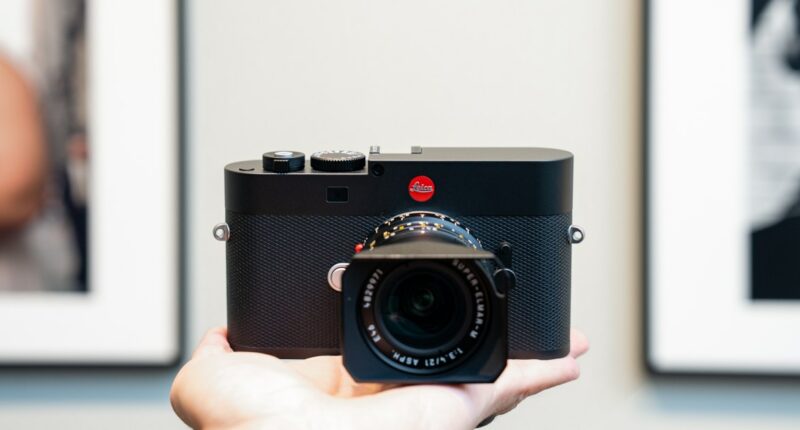Share this @internewscast.com
Leica has unveiled a groundbreaking addition to its M-mount camera series, departing from tradition with the introduction of its first non-rangefinder model. The new M EV1, inspired by the 2023 M11-P, replaces the conventional rangefinder with a high-resolution 5.76-million dot electronic viewfinder, leading to the absence of the typical viewfinder window on the camera’s front. Launching today in Europe and various other markets, the M EV1 is priced at €7,950. For U.S. customers, availability will be delayed due to an FCC hold-up, with an expected price of $8,995.
Built on the foundation of the M11-P, the M EV1 shares its processor and boasts a 60-megapixel full-frame sensor, along with 64GB of internal storage and Content Credentials support. Consistent with other cameras in the M11 line, the M EV1 does not support video recording. Thanks to its aluminum construction, akin to the black M11 model, and the removal of the rangefinder assembly, the M EV1 comes in lighter at 484 grams (or 1.07 pounds) without a lens—about the weight of a golf ball, lighter by 46 grams.
1/4
Despite its modern updates, the M EV1 maintains the manual focus feature typical of rangefinders. Unlike traditional models that require image alignment in an optical viewfinder, users will now focus directly through the lens using the half-inch electronic viewfinder (EVF) or the 2.95-inch rear LCD. Similar to other mirrorless cameras, the M EV1 provides a live exposure preview and access to focusing aids such as focus peaking and magnification.
This live lens view significantly simplifies the use of ultrawide and telephoto lenses on a Leica M. Previously, lenses wider than 28mm often necessitated an external finder, and achieving accurate focus with 90mm or longer focal lengths could be challenging. With the full-time live view, the M EV1 also facilitates close focusing for newer M lenses with a focus range shorter than the traditional 0.7 meters, or when adapting macro lenses from other brands.
Though M series cameras have supported live view since the M (Typ 240) in 2012, users had to rely on the rear display or attach an accessory EVF. The M EV1’s integrated EVF, comparable to the one in Leica’s fixed-lens Q3, operates at a slower 60Hz compared to Q3’s 120Hz. It also adopts the diamond-patterned leatherette from the Q series, though the similarities end there—much to the dismay of Leica enthusiasts hoping for an M EVF camera with a Q-sized form factor.


The M EV1 introduces an innovative twist on a classic rangefinder feature with its new front lever. Traditionally used as a preview lever for changing framelines in viewfinders, the lever now functions as two customizable buttons. Users can toggle it left or right to activate focus peaking and magnification, or press and hold in either direction to access a menu for customizing these functions. This clever update revitalizes a potentially outdated control element. Additionally, the M EV1 forgoes the ISO dial introduced with the M10, opting instead for menu-based ISO adjustments accessible via a function button.
I recently got to hold the Leica M EV1 and tinker with it for a few minutes in a very brief hands-on preview, and I found it to be exactly what I was expecting from a long-rumored “M EVF” camera — though not a modicum more. It’s the bare minimum of swapping the rangefinder for an EVF on an M11-based camera, especially considering Leica deleted the viewfinder window and left that area starkly blank, without even relocating the red dot logo. The window for the rangefinder patch is oddly still there, too, now housing an LED light for the timer. It all looks a little jarring and, frankly, ugly to me.

But that’s fine, I guess, as altering a long-established design sometimes just takes time to adjust to. While I expected Leica might do something a little more fresh here, I (and I’d wager others) was also hoping that subtracting the costly mechanical rangefinder would also mean subtracting a more significant amount off the price. The $845 delta between the M EV1 and M11-P isn’t an insignificant amount, but this remains a $9,000 camera, the same price the now-discontinued M11 first launched at in 2022. Perhaps it’s a little price protection for the traditional M cameras, in case Leica learns more of its fans than expected favor EVFs over a rangefinder.
Photography by Antonio G. Di Benedetto / The Verge







